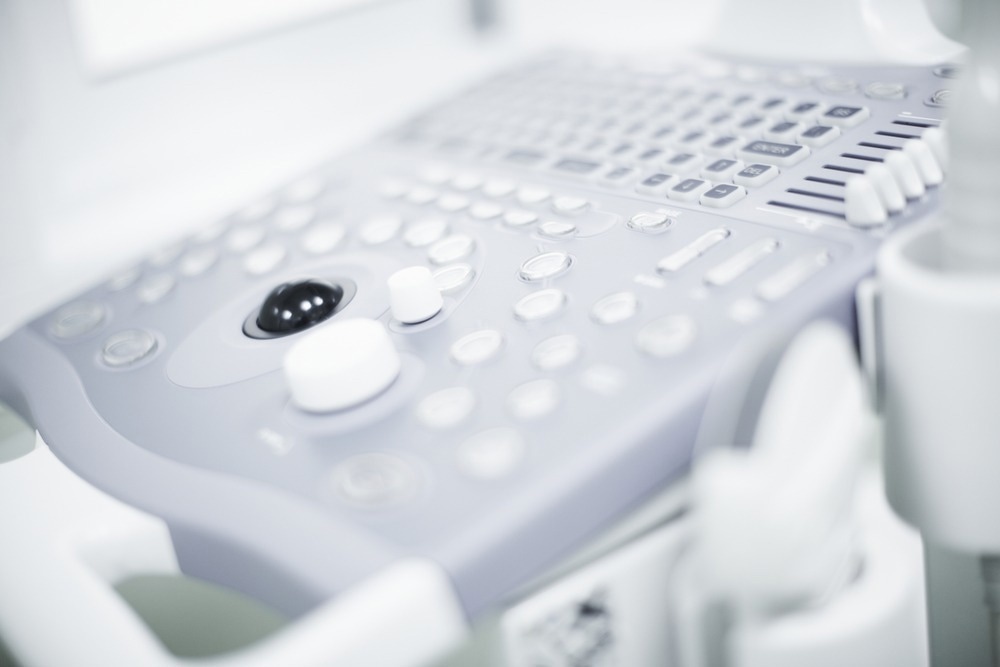What sort of information may be included on a medical device label?
What are the current guidelines for medical device labeling?
What are the advantages of labeling?
What does the future look like for medical device labeling?
References
Further reading
A medical device is an umbrella term for any instrument, software, or other article used alone or in combination for a medical purpose in humans. An estimated 2 million different kinds of medical devices are currently available on the global market, categorized into 7,000 device groups. Devices range from the simple – such as a walking stick, to the complex, such as a cardiac pacemaker system. They are used in various applications, including diagnostics, treatment monitoring, treatment of acute and chronic disease, palliative care, and assisting disabled people.

Image Credit: Y production/Shutterstock.com
This vast number of unique devices requires guidance to enable their safe and accurate use. Medical device labeling ensures the safety of these devices by providing necessary information to those using them. Manufacturing companies attach this information to medical devices through labels with symbols, instructions, warnings, and control information.
By following the label attached by manufacturing companies, patients, doctors, and caregivers can understand how to operate and maintain the medical device and how it interacts with the human body to avoid any safety issues.
What sort of information may be included on a medical device label?
A medical device label contains a lot of information. Usually, it includes the product name and details of the manufacturing company that produced the device. It also includes important information regarding the device's intended use, instructions for use, and safety precautions such as user warnings and contraindications. Depending on the device, the label may also list its ingredients, materials, and storage instructions. Information on how to properly maintain the device, such as cleaning and sterilization instructions, are also usually included.
What are the current guidelines for medical device labeling?
Guidelines for medical device labeling are country-specific. In the US, medical device labeling is governed by the FDA and is instructed by two federal laws: The Fair Packaging and Labeling Act (FPLA) Federal Food, and the Drug and Cosmetic (FFD&C) Act.
In the US, medical device labels must include all necessary information about the device (as discussed above). The information must be presented in a clear and easy-to-read format. Symbols are permitted, so long as care is taken to ensure that they are well understood. The use of internationally recognized symbols is encouraged. The FDA reviews and approves labels, and any changes that need to be made after approval is granted must be reported to the FDA by the manufacturing company so that it can be reviewed and re-approved.
In Europe, the European Medical Device Regulation (MDR) governs medical device labeling requirements. Labeling regulations outlined by the Vitro Diagnostic Medical Devices Regulation (IVDR) must also be followed for some diagnostic devices. According to the EU MDR regulations, medical device labels must include the product's name, lot number or serial number, and information regarding the device's intended use. The contact details of the device's manufacturing company must also be included, along with safety information and instructions on how to sterilize the device.
What are the advantages of labeling?
The major advantage of medical device labeling is that it improves the safety of the product. Information on intended use, warnings, and precautions helps to prevent health professionals, caregivers, and patients from misusing the device, which could have serious health and safety consequences. As well as looking after a patient's safety, the label information ensures that they receive the correct care. While the incorrect use of certain devices may be unlikely to cause immediate physical harm, they may lead to an incorrect diagnosis or improper care being given to the patient.
Labels are also vital in getting a medical device approved by the governing body. The FDA, for example, will not approve a medical device unless a label is included with all the information as outlined above.
What does the future look like for medical device labeling?
The global medical device industry is currently valued at around 577 billion and is predicted to continue to show fair growth over the coming decade. With already 2 million devices already approved worldwide, more will likely be added to this number. This may lead to changes to regulations governing device labeling. Steps may be made to align regulations across countries to make labeling more consistent across regions.
One current challenge in medical device labeling is the requirement to produce labels in the national language of the country it is being sold. For devices that are sold across different countries, this presents practical difficulties. Translations of labels have often proven inaccurate, which can lead to safety issues. In the future, steps will likely be taken to resolve this issue.
References
- Aronson, J.K., Heneghan, C. and Ferner, R.E. (2019) Medical devices: Definition, classification, and regulatory implications, Drug Safety, 43(2), pp. 83–93. https://pubmed.ncbi.nlm.nih.gov/31845212/
- Introduction to Medical Device Labeling [Online]. US Food and Drug Administration. Available at: https://www.fda.gov/medical-devices/overview-device-regulation/device-labeling (Accessed on May 2023)
- Medical devices [Online]. World Health Organization. Available at: https://www.who.int/health-topics/medical-devices#tab=tab_1 (Accessed on May 2023)
- Ronald Rakos. (2017). MDR – Labelling Requirements [Online]. Medical Device Regulation. Available at: https://www.medical-device-regulation.eu/wp-content/uploads/2021/01/MDR-Labelling-Changes-August-2017-Final.pdf (Accessed on May 2023)
- Songara RK, et al. (2010). Need for harmonization of labeling of medical devices: a review. J Adv Pharm Technol Res, 1(2), pp. 127-44. https://www.ncbi.nlm.nih.gov/pmc/articles/PMC3255430/
Further Reading
- All Medical Devices Content
- How Could Sharks lead to New Medical Devices?
- The Importance of Regulating Medical Devices
- Insight into Implantable Medical Devices
- What are Medical Alert Devices?
More…
Last Updated: Jun 16, 2023

Written by
Sarah Moore
After studying Psychology and then Neuroscience, Sarah quickly found her enjoyment for researching and writing research papers; turning to a passion to connect ideas with people through writing.
Source: Read Full Article
